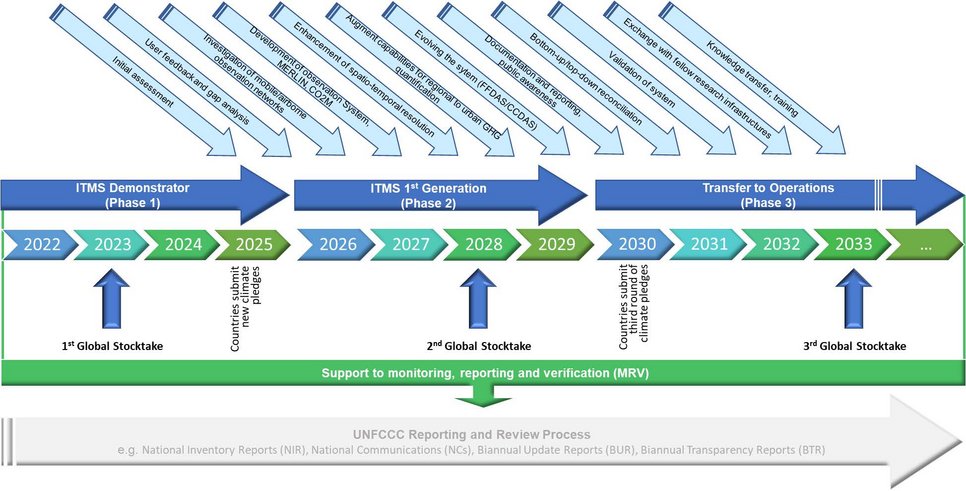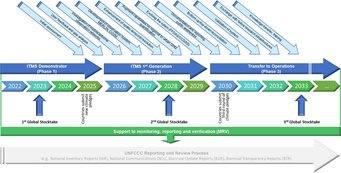
The Timeline of ITMS
The long-term vision of the ITMS is to serve as:

The longer term perspective on the ITMS development.
- An operational service providing input to policy advice and informing the general public on the effectiveness of Nationally Determined Contributions to GHG reduction (NDCs).
- A research infrastructure which enables collaboration with the scientific community to work on relevant research questions, such as identifying hot-spots of emissions, targeting of most promising mitigation regions, unravelling feedback mechanisms between climate change and natural fluxes, or research on “tipping points”, encouraging input from the community for on-going development of the infrastructure.
This requires careful planning regarding the construction and early deployment phase of the infrastructure to arrive at operational readiness while establishing and fostering collaboration with the scientific community. The planning is aligned with external activities like the global stocktake.
The planning involves three phases (see Figure):
- Phase 1 is a development phase providing a demonstrator ITMS.
- Phase 2 aims at establishing a first-generation ITMS capable of providing regular information on GHG emissions based on numerous observational data streams.
- Phase 3 is concerned with the transition to a fully operational system at DWD.
